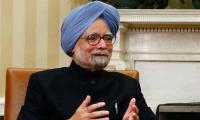LAHORE: India’s acquisition of new fighter jets and missile system has taken the arms race in the region to new levels and Pakistan has to scramble, like in the past, to catch up, said Kaleem Saadat, former air chief marshal of Pakistan Air Force (PAF).
Speaking at ThinkFest 2020 session on ‘Fight for the sky; Pakistan Air Force post-Balakot’, he said the PAF is doing its job of meeting challenges, being posed by the enemy. He was referring to India’s recent or planned acquisitions like Rafale fighters, S-400 missile defence systems and induction of Brahmos cruise missiles. From the capability perspective, he added, we have to acquire competence in terms of platforms and weapons which can deter or respond to hostile actions. “As it appears, for reasons of global re-alignment, we (will) have to rely on the Chinese sources, which as we saw in the October 2019 parade in Beijing, are considerable. “Our air force leadership is aware of the emerging threat and is taking appropriate actions to deal with it,” he added. He was asked where the funding will come from, and whether China will transfer its leading-edge technologies to Pakistan. Former air chief marshal replied that our future war preparedness and response will be dependent on these two factors.
About last year’s air skirmishes with India, he said the February 26/27, 2019 episode highlighted the threat for the future. Though the PAF did well, we are aware that a battle was won, but the war goes on. “We welcome the concerns our citizens and thinkers express for the future. That has always been the case. Even as a young officer”, he added, “everyone asked how the PAF was doing in comparison to the IAF. “My reply used to be that we would do all that was necessary and put up a good fight. That remains the case for today,” he added. Referring to relations with Washington, former air chief said “we have seen a cyclic relationship with the USA. The cycle continues with being the closest of allies to the most-sanctioned and mistrusted friend. “The relationship primarily served American regional security and political interests. On the other hand, Pakistan's gains were secondary and incidental. “The donor claims to have given a lot, but the aid did not make Pakistan secure over the long term,” he added.
Some of the baits thrown to Pakistan were as petty as the recent resumption of International Military Education and Training.
The American administrations since 2001 have talked about billions in aid given to Pakistan and alleged Pakistan's so-called duplicity, but the quantum of aid was miniscule compared to what they expended in their overall effort in Afghanistan.
The cycles of aid denial and release continues unabated to achieve their short-term political and military objectives, he lamented.
Operationally, Saadat said, the PAF laid great emphasis on war preparedness. There are frequent reviews of targeting planes and operational tactics as well as plans. It's for this reason that the PAF has done well in every operation that it was called upon to deliver. The PAF has always been outnumbered, so it has always tried to have tactics, training and technology advantage. The last-mentioned is usually a function of money. There, we have a huge disadvantage due to our dire economic situation, the former air chief said.
“When we got the F-16s, the Indians bought the Mirage 2000, followed by SU-30. They had an advantage in weaponry and avionics. It was addressed to a great extent when post 9/11 we got the AMRAAM for the F-16, he recalled.
In February 27 last year, all of the acquired capabilities contributed to success besides tactical brilliance. The response also has to be offensive. As long as that is credible, deterrence would prevail. Like it was demonstrated on Feb 26. The Indian bombs were delivered, albeit, ineffectively, despite our fighters being in the vicinity. On Feb 27, we responded with offensive action in daylight against ground targets despite the presence of Indian fighter aircraft in the air. Those fighters that came to challenge our escorting aircraft were shot down. Again, it was offensive action, he emphasised. Thus the conclusion is whatever the Indians may do, we would have to respond offensively and appropriately.
The choice of weapon would be made depending on the situation and it may not be in the same domain as the one used by the Indians.
Where Pakistan gained an advantage was in its indigenous JF-17 versus the Indian Tejas development. We managed to operationalise larger number of aircraft quicker than Tejas, he added.
Parliamentary leader of the PMLN in the Senate and Chairman Senate Committee on Foreign Affairs Senator Irfan Siddiqui...
This representational image shows a police official directing the way to the ambulance. — AFP/FileLAHORE: Three...
Particiapants attending a one-day workshop on Human Rights in District Torghar organised by Directorate General Law...







